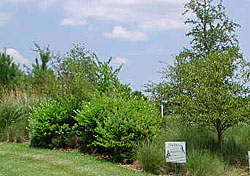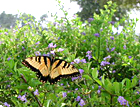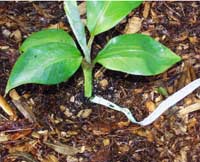
Landscaping in Harmony
Landscaping for a Florida yard
Your yard is an integral part of Florida’s natural environment. How you design and manage your yard is directly linked to the unique and fragile ecosystem that give our state its beauty and sense of wonder. Landscaping for a Florida yard promotes the recognition of this relationship and provides you with the means of creating a yard that becomes an asset to our state’s ecosystems and not a burden on it. Whether your goal is to create a playground, provide habitat for wildlife, or simply to reduce your water and energy bills, you can easily do so by adopting a few simple guidelines.
Getting started
The University of Florida Extension Service has created a Florida Yards and Neighborhood program (FY&N) to guide you through all of your landscaping needs. To begin landscaping for a Florida yard, use this step-by-step guide from FY&N to determine the needs for your yards’ site condition.
- Make a sketch of your yard.
- Collect a soil sample and take it to your County Extension office for pH testing and yard recommendations.
- Create a landscape design for your yard.
- Visit a nearby native plant nursery to begin choosing your favorite plants!
Keep in mind that the elements of designing a landscape for a particular reason (attract wildlife, xeriscaping, firewise landscaping, etc) can call for different use and placement of trees and plants. Begin by choosing which kind of landscaping you would like to do and then design your landscape with those elements.
Native plants are preferred over exotic plants. Why is this? Natives help restore our natural heritage and minimize our impacts on natural resources. Read more.
Within a yard, there are several alternatives to turf and it will often make it easier to maintain your yard if turf areas are reduced. For example, the strip of turf between the sidewalk and street curb is fair game for a makeover if you wish. To learn more, read Turf Alternatives.
In addition, how well does turf sequester carbon dioxide? Carbon dioxide is a global warming gas and all plants utlilize carbon dioxide for photosynthesis. Thus, you would think that turf would sequester more carbon dioxide than it would emit. The answer, however, may surprise you when you take into account lawn maintenance. Read more.











